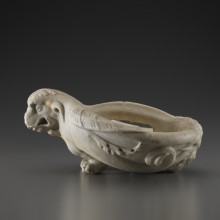
Musée Jenisch Vevey (Switzerland) 29 May 2021 - 5 September 2021
Portrait, autoportrait
This summer, the Musée Jenisch Vevey investigates the captivating topic of portrait and self-portrait. Over 200 artworks will be displayed in this exhibition, which allow visitors to explore a historical genre which has spanned all ages, with a limitless variety of form and expression. The drawings and etchings presented range from the 17th century to the present day; they pertain to the Vevey collections as well as significant Swiss and French private and public collections. Among them, the Fondation Gandur pour l’Art contributes with the loan of the portrait of a man from the 1st or 2nd century AD that belongs to the earliest known tradition of faithful representation of the face. Along the exhibition route, these works will bear witness to the diversity of the portrait and self-portrait, a genre which has reinvent itself over the centuries, and still does to this day.
Exhibition curator: Frédéric Pajak
Whether very meticulously executed or roughly sketched, both portrait and self-portrait represent the exploration of a physiognomy, an attitude, an expression, a state of mind. If this kind of depiction can be used as a formal practice for the artist, it can also give clues on a story, a human connection, a period, a taste or a social status, through the choice of the model and of its setting. Bridge between artist, model, and beholder, it can deliver a political or ideological discourse, or open a window on people’s privacy: it can therefore be a choice medium for expressing love, desire, and friendship, as well as pain and death. Throughout the different sections of the exhibition, the many aspects of this artistic genre will be explored: funerary portraits, animal portraits, children’s portraits, and self-portraits. The works of a hundred or so artists, produced over four centuries, will thus reveal the vitality, richness, and expressive power of the portrait and self-portrait genre.





